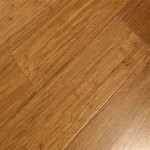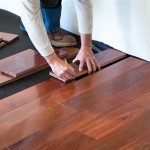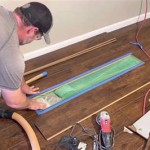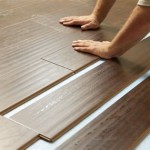What Is Best For Home Gym Flooring?
Investing in a home gym is an excellent way to improve fitness, save time, and create a convenient space for workouts. However, a well-equipped home gym requires more than just exercise equipment; it also necessitates appropriate flooring. The right home gym flooring provides crucial protection for both your equipment and your body, absorbing impact, reducing noise, and creating a safe and comfortable environment for training.
Choosing the best home gym flooring depends on several factors, including the types of exercises you perform, your budget, and the aesthetic preferences for your space. This article explores key considerations and popular flooring options, empowering individuals to make an informed decision about their home gym's foundation.
Types of Home Gym Flooring
Home gym flooring options are diverse, offering varying levels of protection, durability, and aesthetics. Below is a breakdown of the most common types:
1. Rubber Tiles
Rubber tiles are a popular choice for home gyms due to their durability, noise reduction, and impact absorption. They are available in various sizes, colors, and thicknesses, offering versatility in design and functionality. Rubber tiles are ideal for heavy lifting, cardio exercises, and high-impact movements, providing a secure and stable surface.
2. Foam Tiles
Foam tiles offer a soft and comfortable surface, ideal for lighter exercises such as yoga, Pilates, and stretching. These tiles are typically less expensive than rubber tiles and come in various colors and designs. They can be easily assembled and re-arranged, providing flexibility for home gym layouts. However, foam tiles may not be as durable as rubber tiles and are not recommended for high-impact activities.
3. Matting
Matting is a versatile option that can provide both protection and comfort for your home gym. It comes in varying thicknesses and materials, including rubber, foam, and even wood. Matting is often used to create designated workout zones within a larger space, allowing for flexibility in training routines. It can also be easily rolled up and stored when not in use.
4. Hardwood Flooring
Hardwood floors can add a touch of elegance to your home gym. While they may not be as forgiving to impact as other options, they can be refinished and offer a more durable and aesthetically pleasing option. For those who prioritize aesthetics and prefer a natural look, hardwood floors can be a suitable choice. However, they require proper maintenance, and protective layers may be needed for heavy impact exercises.
5. Concrete Flooring
Concrete floors are often the most affordable option, but they can be harsh on joints and create a noisy environment. However, with the addition of a protective layer, such as rubber mats or tiles, concrete can become a viable option for home gyms. This approach provides a solid and durable foundation while mitigating the negative impact of bare concrete.
Key Considerations for Selecting Home Gym Flooring
When choosing the best home gym flooring, consider these crucial factors:
1. Exercise Activities
The types of exercises you plan to perform play a significant role in determining the suitable flooring option. For heavy lifting, high-impact movements, and cardio workouts, durable and shock-absorbing materials like rubber tiles are ideal. Lighter activities like yoga or Pilates can thrive on softer surfaces like foam tiles or matting.
2. Budget
Home gym flooring options range in price, with rubber tiles being the most expensive and foam tiles the most affordable. Consider your budget and determine the best value for your needs. Matting offers a middle ground, with various options available at different price points.
3. Aesthetics
Flooring plays a role in the overall aesthetic appeal of your home gym. Rubber tiles and foam tiles come in various colors and patterns. Matting also offers options for visual customization. If you prioritize aesthetics, consider how the flooring complements the overall design of your gym.
4. Maintenance
Different flooring options require varying levels of maintenance. Rubber tiles and foam tiles are generally low-maintenance, requiring regular sweeping and occasional cleaning. Hardwood floors require more care, including refinishing and protection against scratches. Consider the time and effort you are willing to invest in maintaining your flooring.
Choosing the right flooring significantly impacts the overall experience of your home gym. By considering the key factors discussed above, you can make an informed decision about the best option for your specific needs and preferences. Investing in high-quality flooring will enhance safety, comfort, and enjoyment of your home gym, creating a conducive space for achieving your fitness goals.

What S The Best Flooring For A Home Gym America

Upgrade Your Gym 2025 Best Home Flooring Options

The Best Luxury Gym Flooring Vs Budget Friendly

Cork Flooring Multitalented Enough As Gym Icork Floor

Best Home Gym Flooring Over Concrete Find The Options Discover Ideal For Your Exact Needs And Fitness Goals Get Started Today Rubberflooring4u

Best Flooring For An Exercise Room With Carpet Or Concrete

Best Home Gym Flooring Options 2024 Guide 2025 Today S Homeowner

The Best Home Gym Flooring Options 2025 Garage Reviews

Home Gym Flooring Options Angi

Best And No 1 Home Gym Flooring Options Floors Touch Mckinney
See Also







